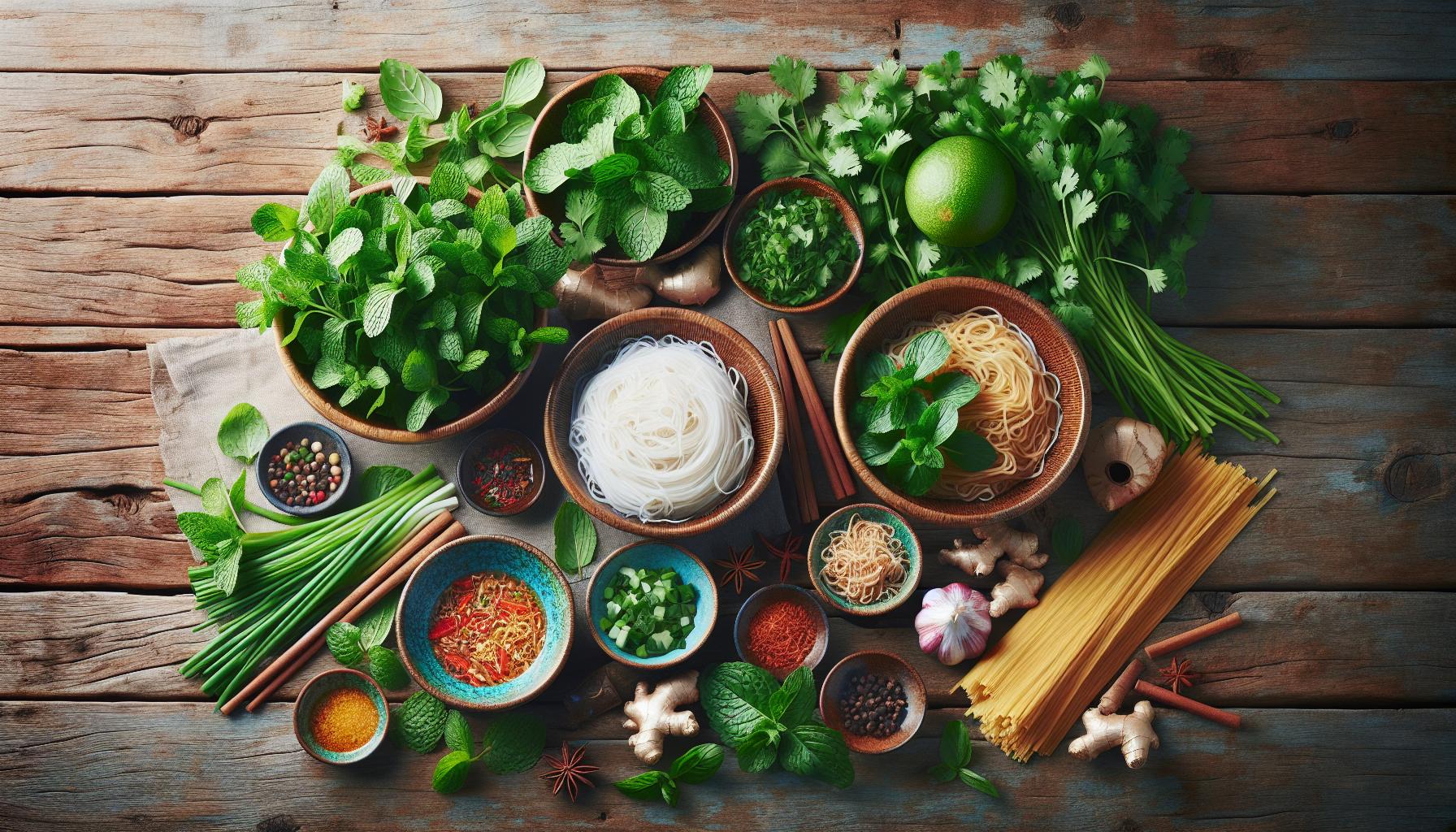The Best Fluffy Pancakes recipe you will fall in love with. Full of tips and tricks to help you make the best pancakes.
Vietnamese cuisine has evolved into a captivating blend of flavors history and cultural influences that span thousands of years. From the bustling street food scenes of Hanoi to the aromatic pho restaurants in Ho Chi Minh City food isn’t just sustenance in Vietnam – it’s an art form that tells stories of generations past.
At its core Vietnamese food culture celebrates the perfect balance of five fundamental tastes: sweet sour bitter salty and umami. Each dish is thoughtfully crafted to include fresh herbs colorful vegetables and locally-sourced ingredients that create a symphony of textures and aromas. The Vietnamese approach to dining goes beyond just eating – it’s a social experience where families gather share dishes and strengthen bonds over steaming bowls of comfort food.
The Rich Heritage of Vietnamese Cuisine
Vietnamese cuisine embodies centuries of cultural evolution marked by diverse regional specialties, foreign influences, and time-honored cooking techniques. Each dish tells a story of Vietnam’s complex history through its ingredients, preparation methods, and serving traditions.
Regional Flavor Variations
Northern Vietnamese cuisine features subtle flavors with minimal spices, focusing on light broths and fresh herbs. The central region embraces spicier dishes with complex chili-based preparations, exemplified by the fiery Hue-style noodle soups. Southern Vietnamese cooking incorporates more sugar and herbs, creating sweet-savory combinations in dishes like Canh Chua (sour soup) and Banh Xeo (crispy pancakes). Geographic variations reflect local ingredient availability, with coastal regions specializing in seafood dishes while mountainous areas feature wild herbs and freshwater fish.
Chinese and French Colonial Influences
Chinese culinary traditions introduced stir-frying techniques, noodle-making methods and the use of chopsticks to Vietnamese kitchens. The wok became essential for Vietnamese cooking, transforming local dishes like Pho and Banh Cuon. French colonization brought baguettes, creating the iconic Banh Mi sandwich, plus cooking methods like slow braising and the use of butter in Vietnamese cuisine. These colonial influences merged with traditional Vietnamese ingredients to create unique fusion dishes such as Bo Kho (beef stew) and Ca Phe Sua Da (iced coffee with condensed milk).
Essential Ingredients in Vietnamese Cooking

Vietnamese cuisine relies on specific ingredients that form the foundation of its distinct flavors and textures. These ingredients create harmony in dishes while maintaining their nutritional value and cultural significance.
Rice and Noodle Varieties
Rice stands as Vietnam’s primary staple food, appearing in multiple forms throughout Vietnamese cuisine. White rice (gạo tẻ) serves as the base for daily meals, while glutinous rice (gạo nếp) creates traditional sweets and festive dishes. Vietnamese rice noodles come in diverse varieties:
- Phở noodles: Flat rice noodles used in the iconic soup
- Bún: Thin vermicelli rice noodles for salads and soups
- Bánh phở: Wide flat noodles for stir-fries
- Miến: Glass noodles made from mung beans
- Bánh hỏi: Thin woven rice noodles for special occasions
- Rau ram (Vietnamese coriander): Peppery leaves for soups
- Thai basil: Sweet anise flavor for pho
- Mint varieties: Spearmint and peppermint for fresh rolls
- Cilantro: Bright citrus notes for garnishing
- Lemongrass: Citrusy stalks for marinades and curries
- Ginger: Warming spice for broths and marinades
- Garlic: Base flavoring for sauces and stir-fries
- Shallots: Aromatic base for stocks and dressings
Popular Vietnamese Dishes and Their Cultural Significance
Vietnamese cuisine encompasses iconic dishes that reflect the country’s cultural heritage through their preparation methods, ingredients and serving traditions. Each dish tells a story of regional influences, family traditions and historical significance.
Iconic Pho and Street Foods
Phở stands as Vietnam’s most recognized culinary export, featuring rice noodles in a fragrant bone broth with herbs and meat. Street vendors across Vietnam serve popular dishes like Bánh Mì (French-Vietnamese sandwiches), Gỏi Cuốn (fresh spring rolls) and Bún Chả (grilled pork with noodles). Local markets offer Cơm Tấm (broken rice with grilled pork) and Bánh Xèo (crispy savory crepes). Each street food dish incorporates specific cooking techniques passed down through generations:
- Phở broth simmers for 12+ hours with specific spices: star anise, cinnamon bark and charred ginger
- Bánh Mì combines French baguettes with Vietnamese pickled vegetables and proteins
- Gỏi Cuốn wraps fresh herbs, vermicelli noodles and shrimp in rice paper
- Bún Chả pairs charcoal-grilled pork with rice noodles and dipping sauce
Traditional Family Meals
Vietnamese family meals center around shared dishes arranged in a specific circular pattern on a round table. A typical family dinner includes:
- Canh (clear broth soup) served in individual bowls
- Cá Kho Tộ (caramelized fish in clay pot) placed at the center
- Rau Muống Xào Tỏi (water spinach stir-fried with garlic) on serving plates
- Steamed rice bowls for each person
Elderly family members receive their portions first, followed by adults and children. Shared dishes create opportunities for conversation and strengthen family bonds. The arrangement of dishes follows feng shui principles, with specific placements for rice bowls, vegetable plates and protein dishes.
Dining Customs and Etiquette
Vietnamese dining customs reflect deep-rooted cultural values centered on respect hierarchy family bonds. The intricate rituals surrounding mealtimes create a harmonious dining experience that strengthens social connections.
Communal Eating Traditions
Vietnamese meals emphasize shared dining experiences where dishes occupy the center of a round table. Elderly family members take the first bite before others begin eating. Rice bowls stay on the table during meals while other dishes are passed around. Each diner receives a personal bowl for rice plus small plates for meat vegetables. The oldest person serves food to younger members starting with elderly relatives then moving down through age groups. Diners share communal dishes using serving spoons dedicated to each plate avoiding cross-contamination. This style creates natural conversation opportunities as people request items pass plates engage in discussions.
Chopstick Customs and Table Manners
Proper chopstick etiquette forms the foundation of Vietnamese dining manners. Diners hold chopsticks at their upper third never pointing them at others or leaving them standing vertically in rice. Smaller pieces of food are picked up first allowing others access to larger portions. Tapping chopsticks on bowls or plates signals disrespect. When finished chopsticks rest parallel on the bowl’s rim or chopstick rest. Additional customs include using both hands when passing dishes keeping elbows off the table waiting for elders to be served first. Slurping noodles indicates enjoyment while burping demonstrates satisfaction with the meal. Conversations focus on positive topics during meals maintaining a pleasant atmosphere.
Modern Vietnamese Food Culture
Vietnamese cuisine continues to evolve in the 21st century through global influences cultural exchange. Technology innovation mixes with traditional cooking methods creating new interpretations of classic dishes while maintaining authentic flavors.
Global Vietnamese Diaspora Influence
Vietnamese immigrants have transformed the global culinary landscape by establishing restaurants in 72 countries. Major Vietnamese populations in the United States France Australia create fusion dishes that blend local ingredients with traditional recipes. Phở restaurants in metropolitan cities like Paris Los Angeles Singapore incorporate regional ingredients while maintaining authentic broth preparation techniques. Food trucks serve bánh mì with locally-sourced ingredients adapting Vietnamese street food culture to urban environments. Social media platforms connect Vietnamese food communities worldwide enabling recipe sharing cultural preservation across borders.
Contemporary Food Trends
Plant-based versions of traditional dishes emerge as health-conscious diners seek Vietnamese cuisine. Instagram-worthy presentations of street food classics attract younger generations to Vietnamese cooking. Food delivery apps increase accessibility to Vietnamese dishes with 47% growth in orders since 2020. Creative chefs experiment with molecular gastronomy techniques on Vietnamese ingredients producing innovative textures flavors. International ingredients integrate into traditional recipes creating cross-cultural dishes like kimchi phở sushi rolls. Ghost kitchens specialize in Vietnamese cuisine delivery expanding reach beyond traditional restaurant settings. Digital cooking classes connect Vietnamese chefs with global audiences preserving authentic techniques through virtual platforms.
Conclusion
Vietnamese cuisine stands as a testament to the country’s rich cultural heritage where every dish tells a story of tradition evolution and connection. The intricate balance of flavors fresh ingredients and time-honored cooking techniques continues to captivate food lovers worldwide.
As Vietnamese food culture adapts to modern times it maintains its core values of family unity respect and communal dining. From street food stalls to high-end restaurants Vietnamese cuisine proves that it’s more than just sustenance – it’s an art form that bridges generations and cultures through the universal language of food.
The future of Vietnamese cuisine looks promising as it embraces innovation while staying true to its authentic roots making it a remarkable example of culinary preservation and evolution.

